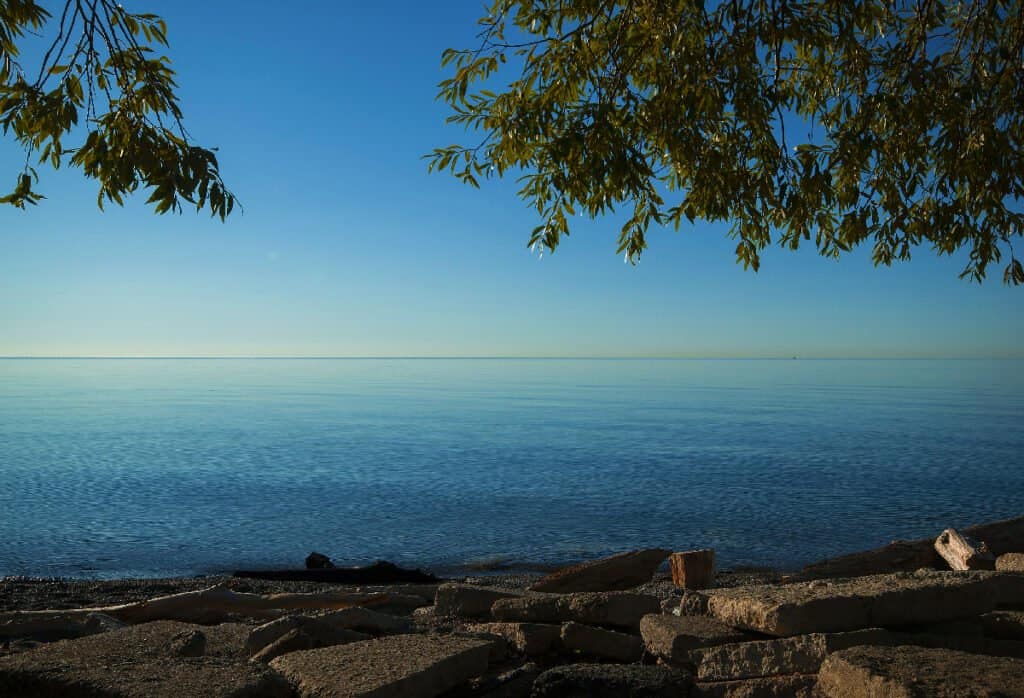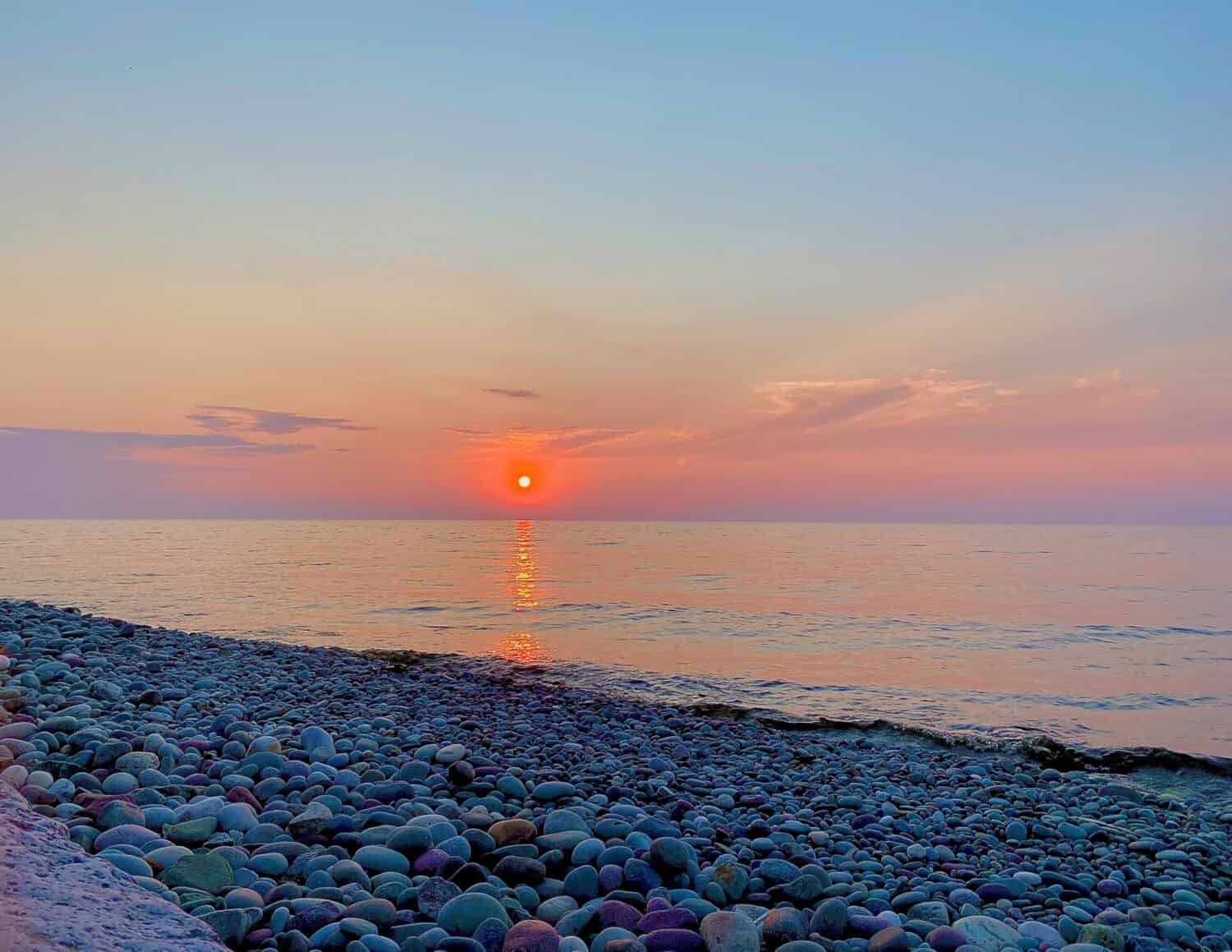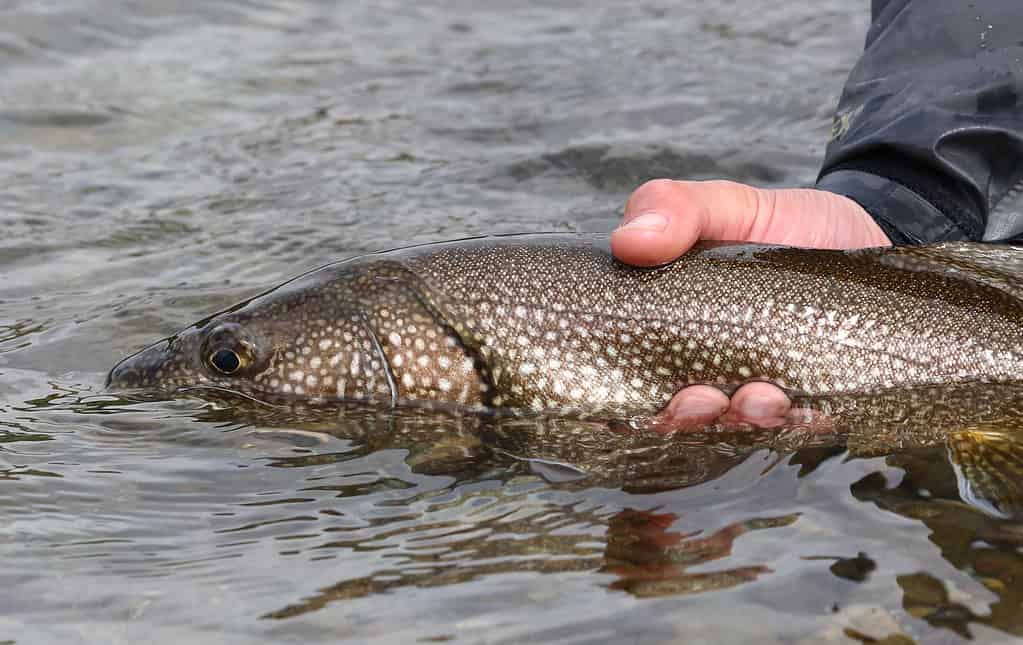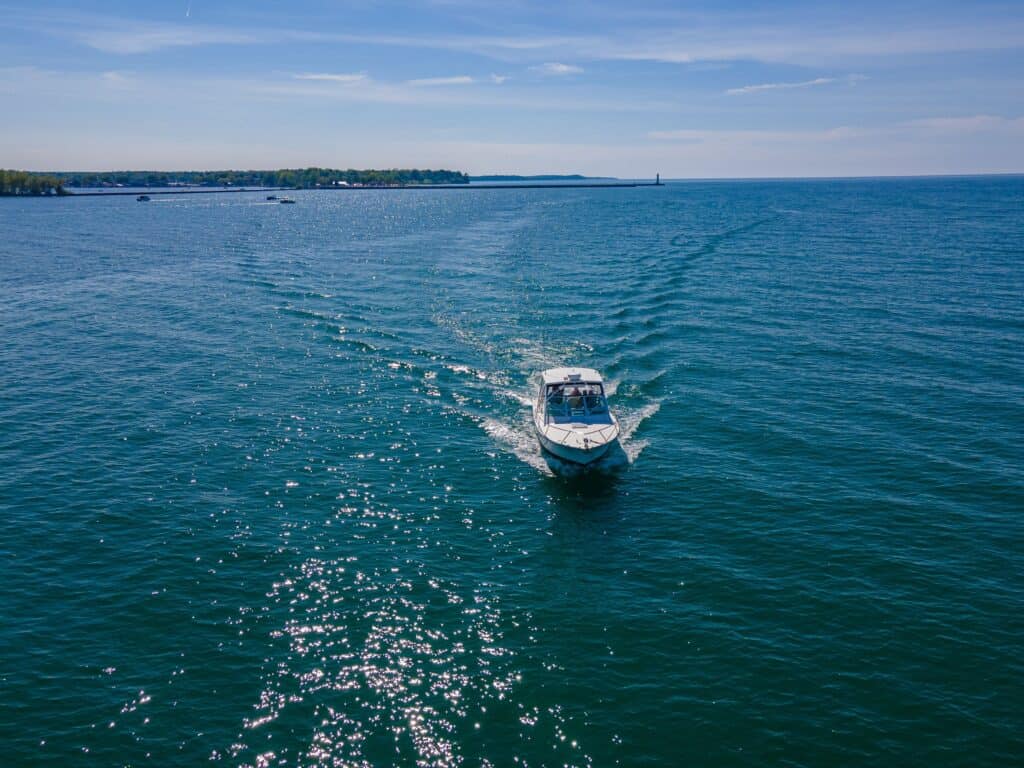One of North America’s five Great Lakes, Lake Ontario, resides between the US state of New York and the Canadian province of Ontario. It ranks not only as the easternmost of the Great Lakes but also the smallest in terms of surface area. Despite its relatively small size compared to its counterparts, Lake Ontario is still the 13th-largest lake in the world.
Lake Ontario boasts a long history. People have used the lake for trade and transportation for centuries. Keep reading to learn about the lake’s location, size, and depth. We’ll also discuss fishing and camping on the lake as well as its geology and history.

Lake Ontario Location
Lake Ontario is located in eastern North America in the Great Lakes Region between the border of the United States and Canada. The Canadian province of Ontario borders the lake’s northern, western, and southwestern shores, while the southern and eastern shores border the US state of New York. The Niagara River connects it to Lake Erie, and the St. Lawrence River connects it to the Atlantic Ocean. On the northern and western shoreline lie the Canadian cities of Toronto, Mississauga, and Kingston. Meanwhile, the US city of Rochester lies on the lake’s southern shore.
Lake Ontario History

Lake Ontario is the smallest Great Lake.
©Michael J. Eves/Shutterstock.com
People have lived around Lake Ontario for thousands of years. The name Ontario derives from the Huron word Ontari’io, which means “great lake.” Prior to the 15th century, the lake served as a border between the Huron people and the Iroquois Confederacy. Sometime during the 15th century, the Iroquois drove the Huron out of their territory and developed settlements on the lake’s northern shores. Indigenous people relied on the lake for food, trade, and transportation. Archaeologists have discovered what are believed to be Norse artifacts on the eastern shores of the lake around Sodus Bay. Findings like these underscore the size and complexity of the trade networks run by the Lake Ontario tribes.
Europeans first arrived at Lake Ontario in 1615. Over the next few centuries, the lake became an important trade route for British and French colonies in North America. Colonists built forts all around the lake to protect trade routes and settlers. The French and Indian War ended with all of the forts around Lake Ontario falling under British control. After the war, settlement in the region increased as the area became a hub for commerce.
Today, the lake continues to support an incredible amount of economic activity. Several ports lie along the shores of the lake, including the ports of Toronto and Hamilton. The lake also generates hydroelectric power and provides drinking water for millions of people.
Lake Ontario Size

Lake Ontario features 726 miles of shoreline.
©Susan Natoli/Shutterstock.com
The surface area of Lake Ontario extends for approximately 7,340 square miles. It features 712 miles of shoreline including its islands and contains around 393 cubic miles of water. The lake measures 193 miles across at its furthest points to the east and west. Meanwhile, it measures around 53 miles wide at its widest point.
Lake Ontario Depth

Beautiful Lake Ontario in Rochester, NY.
©iStock.com/KvitkaNastroyu
In terms of surface area, Lake Ontario measures smaller than the other Great Lakes. However, what it lacks in size, it more than makes up for in depth. With an average depth of 283 feet, it ranks second in terms of the average depth of the Great Lakes. Only Lake Superior measures deeper on average. At its deepest point, the lake measures approximately 802 feet deep. That said, the depth of the lake varies throughout the year depending on temperature, precipitation, and water use.
Lake Ontario Water Level
As previously mentioned, the water level of Lake Ontario fluctuates throughout the year. Snowmelt, rainfall, temperature, and water all affect the lake’s water level. Generally speaking, the water level hits its highest point during spring or summer. This occurs due to runoff from snowmelt and precipitation. On the other hand, the lake usually measures lowest during fall and winter due to less precipitation.
From 1998 to 2013, the Great Lakes region witnessed lower-than-average water levels. However, starting in 2013, water levels in the lake rebounded. In fact, by 2017, the water levels in the lake hit a record high. This surge was short-lived, however, as the next few years saw a return to lower-than-average levels. In fact, the water level in the lake dropped more than 3 feet between 2019 and 2021, the largest drop in recorded history over such a short time span.
Lake Ontario Fishing

Lake trout and other thriving fish populations live in the lake.
©Iryna Harry/Shutterstock.com
For much of its history, Lake Ontario has supported a thriving fishing industry. Indigenous tribes and European settlers both enjoyed the bounty of the lake for hundreds of years. However, beginning in the 20th century, fishing hauls started to decline. Today, few commercial fishing operations remain in Lake Ontario. The few commercial fishers on the lake today operate under strict regulations governed by the US and Canadian governments.
Most fishing on Lake Ontario today is done by recreational anglers. The lake supports a diverse range of wildlife and some exceptionally large fish. This diversity stems from Lake Ontario’s location, as the other Great Lakes feed into Lake Ontario, which in turn feeds into the Atlantic Ocean.
Before fishing on the lake, you’ll need a Canadian or New York fishing license, depending on what side of the lake you’re fishing on. If you plan on fishing on both sides of the lake, you’ll need to get a license from both and also bring your passport. You can fish on the lake shore or charter a boat. During winter, you can even ice fish on the lake, depending on the thickness of the ice.
There are many great places to fish on Lake Ontario. Some popular fishing spots include Pulaski, Niagara County, Oswego, the Bay of Quinte, and the waters near Rochester and Toronto. The area you choose will largely influence what type of fishing you want to do and what type of fish you want to catch. Here are a few of the fish you can find in the lake:
- Steelhead salmon
- Walleye
- Pike
- Lake trout
- Brown trout
- Bass
- Coho salmon
Lake Ontario Geology
Lake Ontario formed during the most recent ice age due to the movement of the Wisconsin ice sheet. This giant glacier carved out the soft rocks in the area and left behind formations such as glacial tills, drumlins, and kames around the landscape. Over time the ice sheet retreated north, which has caused the land on the northern side of the lake to slowly rebound. This rebounding means the lake is gradually tilting southward and slowly raising the water levels on the southern shore.
Lake Ontario Boating and Watersports

The lake is a popular boating destination.
©Wirestock Creators/Shutterstock.com
In addition to fishing, Lake Ontario also offers plenty of opportunities for other recreational activities. The lake serves as a popular destination for boating and other watersports. You can rent a canoe or kayak from one of many vendors on the Canadian or US side of the lake. Other activities include flyboarding, sailing, paddleboarding, diving, snorkeling, wakeboarding, jet skiing, and much more. You can also charter a cruise to take you out for a picnic on the water or to go swimming in the cool clear water of the lake. Just follow local regulations when engaging in watersports.
Lake Ontario Camping
Lake Ontario also offers plenty of camping opportunities via hundreds of campgrounds scattered along the shoreline of the lake. These campgrounds offer visitors a chance to escape the hustle and bustle of the city and enjoy the lake’s scenery. The lake offers traditional campgrounds and RV parks that visitors can rent for a fee.
Some popular campgrounds here include:
Lakeside State Park. This popular destination near Waterport offers great hiking, fishing, biking, restrooms, and showers. It also allows pets and features amenities such as a disc golf course.
Southwick Beach State Park. Located near Henderson, this park offers RV and traditional tent campsites. It includes amenities such as picnic tables, showers, and toilets and also allows pets. Activities nearby include paddling, biking, boating, hiking, and wind sports.
Fair Haven Beach State Park. Located near Fair Haven, this beach offers campers plenty of recreational activities. Fair Haven Beach offers it all, whether you want to hike, fish, or take in the scenery.
Where Is Lake Ontario Located on a Map?
Lake Ontario is separated from Lake Erie by a bridge of land extending over from Canada to touch a corner of New York state at Buffalo, and above that, at Niagara Falls. This smallest of the Great Lakes still has extensive beach areas and hosts many islands and lighthouses.
The photo featured at the top of this post is © Susan Natoli/Shutterstock.com
Thank you for reading! Have some feedback for us? Contact the AZ Animals editorial team.






